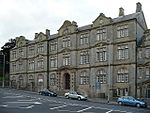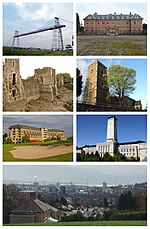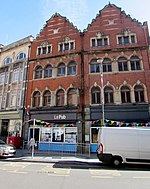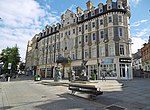Newport railway station

Newport (Welsh: Gorsaf Rheilffordd Casnewydd) is the second-busiest railway station in Wales, after Cardiff Central). It is situated in Newport city centre and 158 miles 50 chains (255.3 km) from London Paddington, via Stroud.The station was originally opened in 1850 by the South Wales Railway Company and was greatly expanded in 1928. A new station building was built in 2010, with four full size platforms to facilitate new Great Western Railway 10-car Intercity Express Programme trains. The station is owned by Network Rail and managed by Transport for Wales Rail. The main station entrance is located on Queensway, connected by Station Approach to the High Street; there is a further entrance adjoined to the National Car Parks site at its rear, reached from Devon Place.
Excerpt from the Wikipedia article Newport railway station (License: CC BY-SA 3.0, Authors, Images).Newport railway station
Station Approach, Newport Stow Hill
Geographical coordinates (GPS) Address Nearby Places Show on map
Geographical coordinates (GPS)
| Latitude | Longitude |
|---|---|
| N 51.5888 ° | E -3.0004 ° |
Address
2
Station Approach
NP20 1GB Newport, Stow Hill
Wales, United Kingdom
Open on Google Maps









